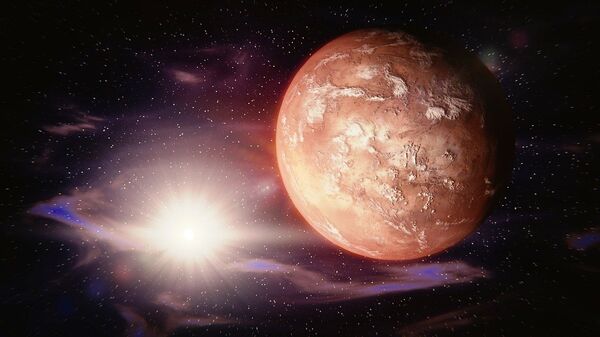The super sharp images described as "revolutionary" by researchers at University College London reveal the shots taken of the surface of the planet including the UK’s once lost Beagle-2 lander and ancient lakebeds initially discovered by NASA’s Curiosity rover.
The images have been released by researchers from UCL’s Mullard Space Science Laboratory and published in journal Planetary and Space Science.
#beagle2 #nofilter @MSSLSpaceLab #SuperResolutionRestoration #5xgreater #ColinPillinger #ESA2018 #Mars #MarsLander pic.twitter.com/9aGxQMl6uF
— jamesmlm (@jamesmlm) April 26, 2016
Scientists "stacked and matched" images taken from orbit to reveal the objects at a resolution up to five times greater than previously achieved.
"We now have the equivalent of drone-eye vision anywhere on the surface of Mars where there are enough clear repeat pictures. It allows us to see objects I much sharper focus from orbit than ever before and the picture quality is comparable to that obtained from landers," co-author Professor Jan-Peter Muller from UCL's space laboratory said.
Image processing technique by @MSSLSpaceLab shows Mars in unprecedented detail: @motherboard https://t.co/Z6u16oCvWO pic.twitter.com/cHE6RnCMNt
— UCL News (@uclnews) April 26, 2016
The Super-Resolution Restoration (SRR) is a technique allowing tiny objects captured by a telescope to be seen in high resolution by stacking and matching pictures of the same area taken from different angles.
"As more pictures are collected, we will see increasing evidence of the kind we have only seen from the three successful rover missions to date," co-author Professor Jan-Peter Muller from UCLs space laboratory said.
"This will be a game-changer and the start of a new era in planetary exploration," Professor Muller added.
The UCL team applied SRR to stacks of images of the surface of Mars taken by NASA’s HiRISE camera to achieve its five centimeter target resolution, including the latest images of the Beagle-2 landing provided by Professor John Bridges from the University of Leicester.
"Using novel machine vision methods, information from lower resolution images can be extracted to estimate the best possible true scene," Mr Yu Rao, research associate at UCL and lead author of the paper.
"This technique has huge potential to improve our knowledge of a planet’s surface from multiple remotely sensed images."

